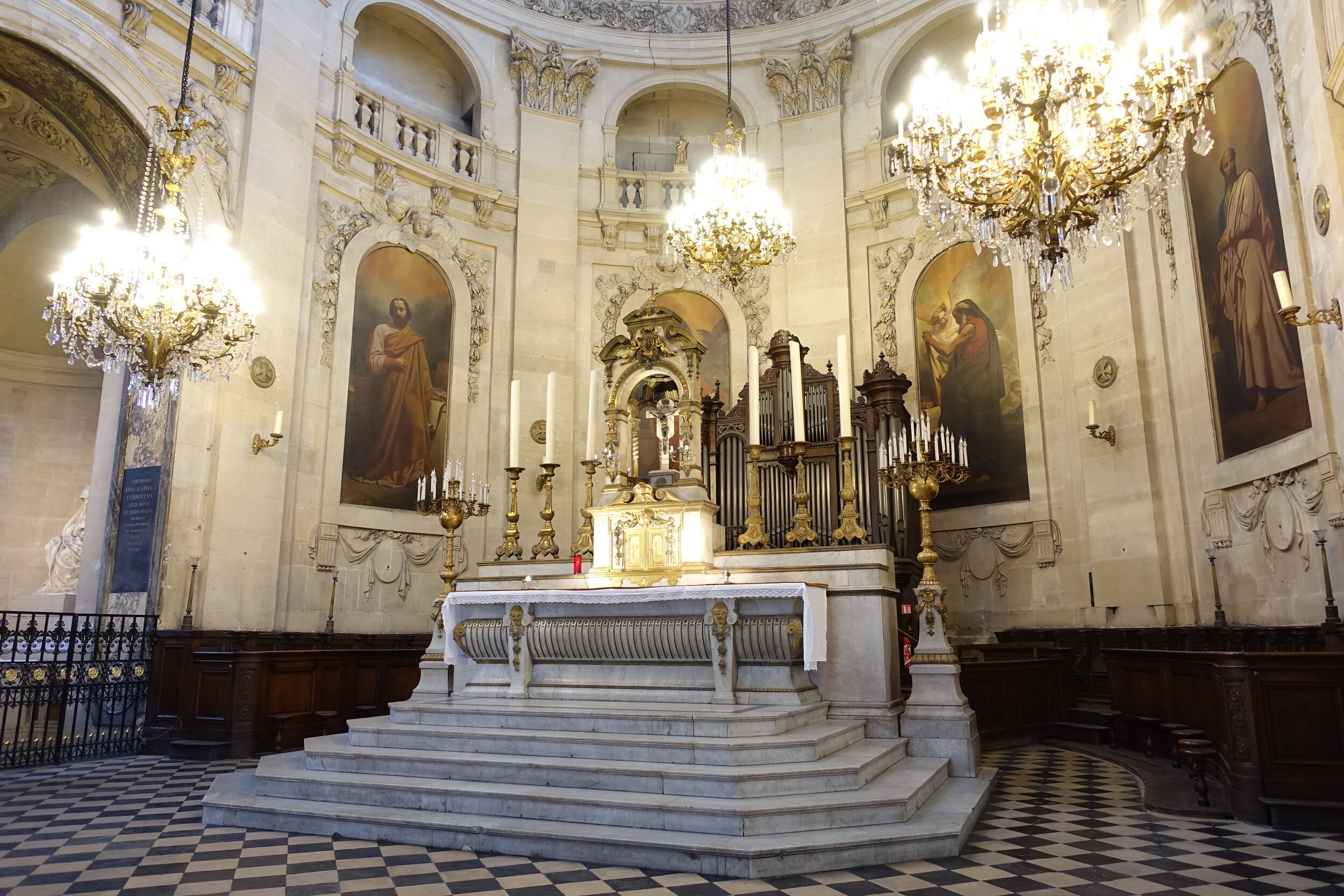Image, Theatre, and the Spectacle of Music
In the second of three blogs in conjunction with our upcoming live recording of Marc-Antoine Charpentier’s Missa Assumpta est Maria, Edward Higginbottom muses on the interplay between music and spectacle in the Baroque. You can read the first entry here.
What has an iconic gothic interior got to do with late 17th-century music? It’s all in the eye of the beholder, of course. So, here goes.
There is a strand running through French aesthetics (if I may be permitted to draw a national boundary) that draws music closer to the visual arts than might be the case elsewhere. When Debussy places the titles of his Préludes at the end of each piece, he is doing what painters do: displaying a title at the foot of the canvas. When François Couperin gives practically every piece in his harpsichord books a non-musical title, he is explicitly referring to the portraits therein (‘found on occasion’, he says in the preface to his premier livre ‘to be remarkable likenesses’). When Charles Batteux (Les beaux arts réduits à un même principe, 1746) unpacks for us the nature of musical experience, he chooses to take us round an imagined picture. We look at our listening.
If there was always something of the picture about French Baroque music, there was even more of the theatre. Décor, machines, costume, and ballet not only refracted their images across the ear: they defined what was being heard. The mythologies found in Lully’s opera were transported in this manner, from Elysian Fields to Hades. Further, the mingling of secular and sacred ideologies easily carried the theatre into the church, and into a church such as the Jesuits’ St Louis in the rue Sainte Antoine.
Charpentier had long been associated with the Jesuit community in Paris, but his official appointment to St Louis came later, in 1688. The building was still relatively new, having been finished only in 1641. Its interior space was nothing if not theatrical, its high altar decked out with huge canvases, reliquaries, silver vases, garlands. Its very ground-plan could not have been better adapted to scenic display. Catherine Cessac sums it up thus: ‘The beauties of architecture, sculpture, painting and decorations: the pervasive odours of incense, glowing candles, and the blazing candelabra; the priests’ rich velvet silk, and lace finery; the swell of the preacher’s voice, now menacing, now reassuring; and finally the music, filling this atmosphere of devotion and magnificence with its harmony – all combined to turn ceremonies into sophisticated and enchanting spectacles “ad majorem Dei gloriam.”’ Charpentier’s music is not simply very much at home in this setting, it is inextricably woven into it. In a sense (literally, one might say), it is difficult to listen to the music without visualizing the setting.
We are going further here than rhetorical devices in music, designed to excite particular emotional responses. The image looms large. It’s as though we can walk around the music; view it from this angle, and that; admire its proportions; marvel at its colour and atmosphere; and, of course, identify unambiguously the subject drawn. Batteux was very insistent on this last point: ambiguity was a failure in purpose and execution. How, one might wonder, would such an aesthetic work on the mind of a composer embedded in so theatrical a sacred space? How would it work on his mind when composing the last of his mass settings in the jewel box that is La Sainte Chapelle? My third and final blog will attempt an answer.


